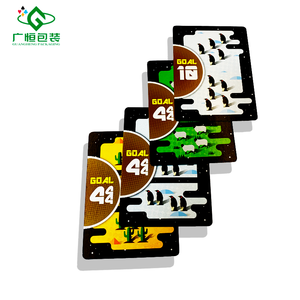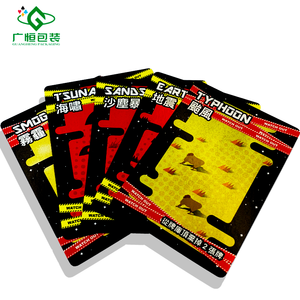(9624 products available)












 Ready to Ship
Ready to Ship







































































































































































4C games are a popular category of games that integrate the four C's of 21st-century education — critical thinking, creativity, communication, and collaboration. These games are designed to foster essential skills in a fun and engaging way. There are different types of 4C games, each with unique features.
Board games
4C board games are a popular choice for educators and families. These games involve strategic decision-making, problem-solving, and teamwork. For example, in the board game 'Settlers of Catan,' players must trade resources, negotiate with each other, and build settlements. This fosters collaboration and communication skills.
Video games
Video games have become a ubiquitous form of entertainment in modern society. They offer immersive experiences that can transport players to fantastical worlds and allow them to interact with intricate narratives, characters, and environments. The advent of technology has revolutionized the gaming landscape, introducing cutting-edge graphics, realistic physics, and sophisticated artificial intelligence. However, 4C video games require players to solve problems, think critically, and work together to accomplish tasks. For instance, games like 'Minecraft' allow players to build structures and collaborate on projects. 'Portal 2' is another 4C video game that challenges players to solve complex puzzles using critical thinking and creativity. These video games are very important for kids since they help in their overall development.
Card games
4C card games are a versatile tool for developing important skills in a fun and interactive way. These games often require strategic thinking, problem-solving, and social interaction, making them ideal for fostering the four Cs: critical thinking, creativity, communication, and collaboration. An example of a 4C card game is 'Cards Against Humanity,' which involves critical and creative thinking to come up with humorous combinations of phrases. Another example is 'Uno,' which is a game that emphasizes communication and collaboration among players.
Outdoor games
Outdoor games provide a valuable platform for children to engage in physical activity, socialize, and develop essential skills. These games, often played in parks, backyards, or sports fields, encompass a wide range of activities, from traditional playground games like tag and hopscotch to organized sports such as soccer, basketball, and volleyball. 'Capture the Flag' is a classic outdoor game that fosters teamwork, strategic thinking, and communication skills. Players must work together to devise strategies, coordinate movements, and communicate effectively to outsmart the opposing team and capture their flag. 4C outdoor games are essential for kids as they help them learn teamwork, leadership, and problem-solving skills while enjoying the benefits of outdoor physical activity.
Choosing the right 4C game for a business or organization involves considering various factors to ensure it fits their needs and objectives. Here are some tips on selecting the right 4C game:
Determine the learning objectives
Before anything else, clearly define what the organization wants to achieve with the game. What skills or knowledge does it want to impart? Be specific. For instance, if the goal is to teach strategic planning, make that the primary focus of the game. Having clear objectives will guide the selection process.
Assess the target audience
Consider who will play the game. Is it for employees, students, or a mixed group? What is their age range, educational background, and experience level? Understanding the audience helps in choosing a game that suits their needs and abilities. For example, a complex game may not be ideal for younger players or those new to gaming.
Evaluate the content and relevance
The game should have accurate and relevant content that aligns with the organization's goals. Look for games that have been reviewed positively by experts in the field. Also, ensure the content is current and covers the topics the organization wants to address.
Consider the gameplay mechanics
The rules and mechanics of the game should be easy to understand but challenging enough to keep players engaged. Avoid games with overly complicated rules that require lengthy explanations. The mechanics should also support the learning objectives, meaning they should not be too easy or too hard.
Think about the level of interactivity
Interactive games tend to be more effective in promoting learning because they involve players actively. Look for games that encourage discussions, collaborations, and problem-solving among players. Such games create a dynamic learning environment where players can share their ideas and experiences.
Check the scalability and adaptability
The game should be scalable to accommodate different group sizes and adaptable to various settings. Some games can be played by small or large groups, making them suitable for team-building activities or workshops. Also, look for games that can be adapted to different formats, such as online or in-person.
The 4C game has numerous designs that come with distinct functions and features. Here are some common designs along with their functions and features:
Classic Board Game
This design is popularly known for its grid-like board with four columns and rows. It has a token for each player. Additionally, it comes with dice and cards.
The function of this design is to provide a structured gameplay. It allows the players to move around the board in an orderly fashion. The tokens that represent the players' pieces are moved based on dice rolls. The cards are drawn to determine the actions and outcomes.
The features include the board which provides a visual path for players. The dice promote chance and unpredictability. The cards offer a variety of actions, events, or challenges.
Connect Four Game
This design features a vertical grid or board. It allows players to drop colored discs into the columns. It is also known to have a simple grid and colored discs.
The function of this design is to engage players in a game that is based on strategy. Players take turns dropping discs in an attempt to connect four in a row, whether horizontally, vertically, or diagonally.
The features include the grid which provides structure for the gameplay. The discs are easily slotted into columns by the players. The game is based on strategy which promotes critical thinking.
4C Card Game
This card design is made up of a standard deck of playing cards that have the four suits, namely hearts, diamonds, spades, and clubs. It is also accompanied by a set of cards that are used during the game.
The function of this design is to provide a versatile gaming experience that can be adapted to different rules and variations. It engages players in a variety of card games that are based on strategy and skill.
The features include the standard deck which allows for a wide range of card games to be played. The versatility provides flexibility in terms of rules and gameplay. The social interaction encourages communication and bonding among players.
Like any other, safety and quality are important in 4C games for kids. To ensure that the game is safe and its quality is good, the producers follow some rules and regulations. Here are some safety and quality features of 4C games:
Durable materials
4C games are usually made from materials that are not only safe for children but also strong and durable. Children can be very active when playing, and sometimes they may mishandle the game. Therefore, the games are made from sturdy materials so they don't break easily. This ensures the game lasts longer, even with rough handling.
Non-toxic materials
The materials used to make 4C games for kids are non-toxic. This means that they are made from materials that are safe for children who may put the game in their mouths. The game also has smooth edges and small parts that are not easy to remove. This ensures that the child is not at risk of cutting themselves or choking.
Electrical safety
4C games that require electricity have electrical safety features. The electrical components are well-protected to ensure the child does not touch them when playing. The game also uses low-voltage batteries and power supplies to reduce the risk of electrical shock.
Compliance with safety standards
4C games comply with the international safety standards set by the industry. This ensures that the games are tested and found safe before being sold. The tests include checking the materials, construction, and labeling of the games.
Quality design
The design of 4C games is made to ensure quality. The producers make the games using the input of teachers, child development specialists, and educational experts. This ensures the game is engaging and promotes critical thinking.
Q1: What are the benefits of 4C games?
A1: Four-color games (4C games) can foster important skills and values in children that are critical for their holistic development. They help in the development of cognitive skills such as critical thinking, problem-solving, decision-making, and strategic planning. From an educational perspective, 4C games promote learning in a fun and interactive way that enhances knowledge retention and comprehension.
Q2: What makes 4C games effective in learning?
A2: 4C games are effective in learning because they are immersive and engaging, which motivates children to participate actively in the learning process. By simulating real-life scenarios and challenges, 4C games provide children with opportunities to apply their knowledge in practical situations, thus bridging the gap between theory and practice.
Q3: How do 4C games promote collaboration among children?
A3: 4C games encourage teamwork and cooperation among players, which helps to build social skills and emotional intelligence. Through group activities and challenges, children learn to communicate effectively, resolve conflicts, and work towards a common goal, fostering a sense of belonging and community.
Q4: What role do 4C games play in a child's development?
A4: 4C games play a significant role in a child's development by providing a safe and supportive environment for exploration and experimentation. They also contribute to the development of fine and gross motor skills, spatial awareness, and coordination.
Q5: How can parents and educators support the use of 4C games?
A5: Parents and educators can support the use of 4C games by selecting age-appropriate and relevant games that align with the child's interests and learning objectives. They can also facilitate discussions and reflections before and after playing the game to enhance the learning experience and reinforce the concepts taught.